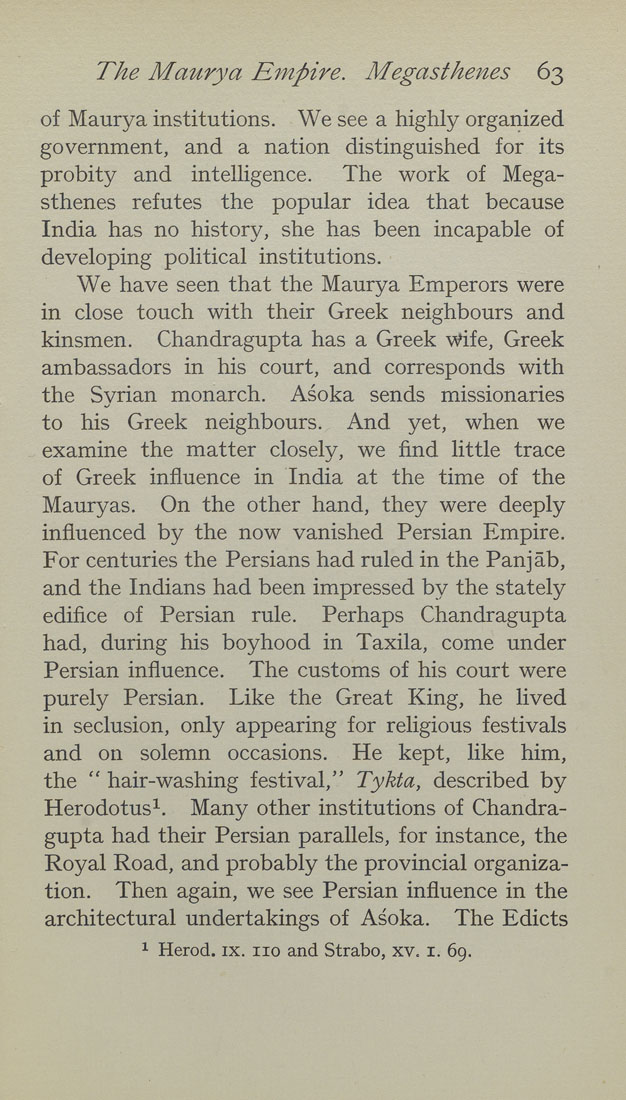The Maurya E'^npire. Megasthenes 63
of Maurya institutions. We see a highly organized
government, and a nation distinguished for its
probity and intelligence. The work of Mega¬
sthenes refutes the popular idea that because
India has no history, she has been incapable of
developing political institutions.
We have seen that the Maurya Emperors were
in close touch with their Greek neighbours and
kinsmen. Chandragupta has a Greek v^ife, Greek
ambassadors in his court, and corresponds with
the Syrian monarch. Asoka sends missionaries
to his Greek neighbours. And yet, when we
examine the matter closely, we find little trace
of Greek influence in India at the time of the
Maury as. On the other hand, they were deeply
influenced by the now vanished Persian Empire.
For centuries the Persians had ruled in the Panjab,
and the Indians had been impressed by the stately
edifice of Persian rule. Perhaps Chandragupta
had, during his boyhood in Taxila, come under
Persian influence. The customs of his court were
purely Persian. Like the Great King, he lived
in seclusion, only appearing for religious festivals
and on solemn occasions. He kept, like him,
the '' hair-washing festival," Tykta, described by
Herodotus^. Many other institutions of Chandra¬
gupta had their Persian parallels, for instance, the
Royal Road, and probably the provincial organiza¬
tion. Then again, we see Persian influence in the
architectural undertakings of Asoka. The Edicts
1 Herod, ix, no and Strabo, xv. i, 69.
|








